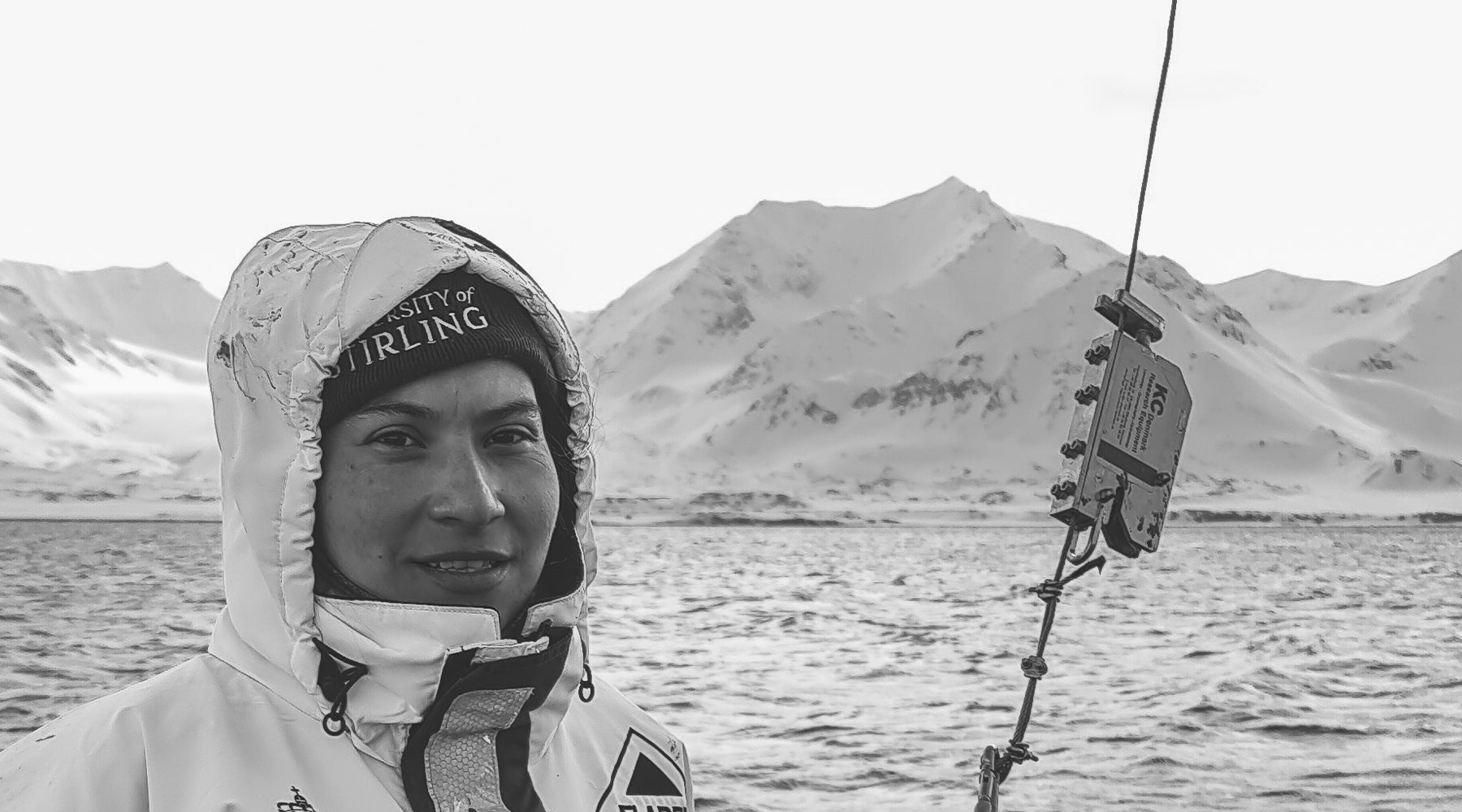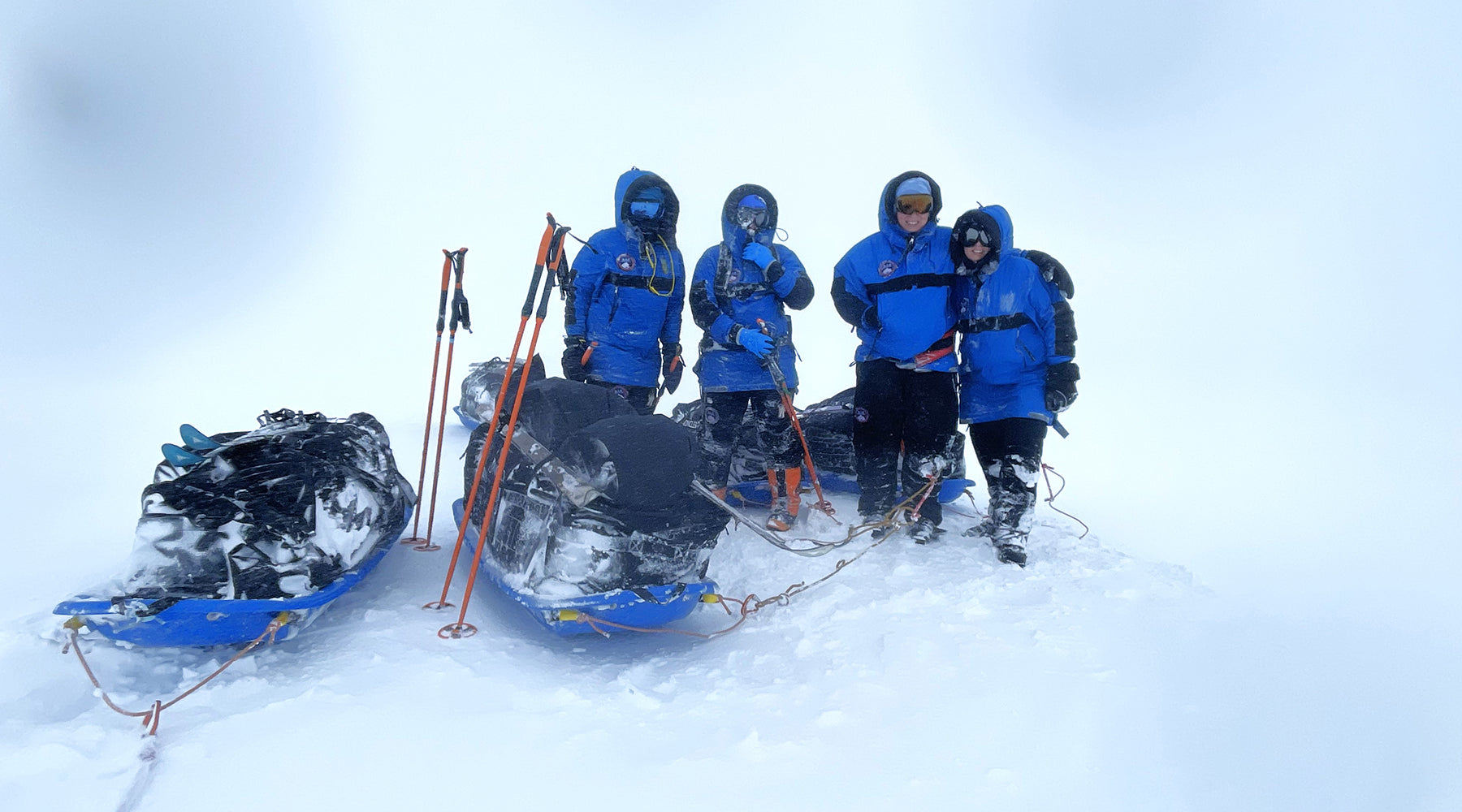
SHACKLETON MEDAL: Meet The Shortlist - Ximena Aguilar Vega
The shortlist for the Shackleton Medal for the Protection of the Polar Regions 2024 was announced on 24th April 2024, following an animated debate at the Royal Geographical Society, chaired by Sunday Times bestselling author Lewis Dartnell. In our latest journal series we meet each of the inspiring individuals from the shortlist. Here, Explorer and Research Scientist, Ximena Aguilar Vega answers questions from Rachel Halliburton about her strong connection to the natural world and how she has worked to overcome grief and trauma through her commitment to the polar regions.

What was it that first captured your imagination about the polar regions?
Being born in one of the world's most densely populated cities (Mexico City) didn't hinder my profound connection with nature. A tree outside my grandparents' restaurant served as my first teacher, revealing the vastness and interconnectedness between humans and the Earth. Spending countless hours sheltered in that tree sparked my imagination, igniting a desire to explore seemingly impossible landscapes.
From that moment on, I knew I wanted to be an explorer. I started imagining the poles as the source of a profound silence and distant rhythm of a world almost untouched by humans. I could feel a huge excitement just by imagining encountering another character of our living planet. Somehow, I knew I would have a stronger connection with the natural world, by immersing myself in a white and empty landscape; an environment where everything appears simple yet holds profound significance, unique places where one can listen another kind of silence. Throughout the years, my curiosity was strengthened by a wish to understanding more about the challenges and suffering of our planet.
What detail about your work most surprises people?
I would say that the approach I take with my projects which are deeply rooted in the belief that connections permeate every aspect of our world, linking diverse elements together. Rather than only adhering to Western scientific perspectives, I aim to delve deeper, embracing a holistic understanding that incorporates various viewpoints and disciplines.
For instance, in my work, I integrate poetry, abstract languages, and the Art of Colours to explore new dimensions of understanding and connection with the polar regions. Poetry infuses emotion and metaphor, offering diverse insights and inclusiveness through languages that bridge different cultures and perspectives. Lastly, the Art of Colours brings life into my latest work, transforming abstract concepts into tangible expressions that convey the essence of the pristine landscapes of our planet.
Through this approach, my projects aim to transcend traditional boundaries, fostering a more interconnected and comprehensive view of the world.

What technological advance has proved a real game changer?
I would say satellite images. These images provide unprecedented insights into the intricate dynamics of our planet. Both optical and radar images reveal hidden aspects of our oceans, ice, and Earth, unveiling the profound interconnectedness of all non-living and living beings. These tools demonstrate day by day that everything we humans do has an impact in the world. While these tools are becoming increasingly accessible to communities worldwide, there remains work to be done in ensuring inclusivity and equitable access to these resources.
Moreover, the breathtaking images of our planet from space have the potential to greater openness and inspire a shift in how we perceive and interact with nature. Rather than viewing the Earth solely as a resource, these images encourage us to explore new perspectives and collaborate more harmoniously with the natural world.

What is the toughest challenge you have found and how did you overcome it?
Two years ago, I found myself in a profound darkness. Despite navigating chronic depression for two decades without much difficulty, the pursuit of my dreams to explore the poles brought unexpected challenges. Sudden trauma eruptions, overwhelming loneliness, and the loss of my beloved grandmother plunged me into an almost unbearable pain. The storm of emotions hit me like thunder, and I reached a critical juncture in Longyearbyen, torn between life and death.
In that moment of despair I went for a long walk, hoping to clear my mind. While waking surrounded by the beautiful white icy landscape, I anchored my heart to the frozen earth and committed myself to protecting the ice and oceans—places that have always given me peace and a strong sense of belonging.
This marks the first time I've spoken about this chapter of my life openly, yet I believe that in these times, vulnerability is essential to heal our planet.

What has been the most rewarding moment for you in your work?
The most rewarding moment for me in my work was witnessing people's reactions to my art exhibit at COP26. Large-format images of the polar and subpolar regions were paired with human voices mimicking the sounds of ice, wind, and water. Seeing the expressions on their faces, the smiles, and the unexpected tears filled me with huge hope. It was an invaluable experience that reinforced my commitment to telling the story of the poles exploring different formats and storytelling.
Additionally, the involvement of my home country, Mexico, a non-polar nation, in the high-level group "Ambition on Melting Ice: On Sea-level Rise and Mountain Water Resources (AMI)," at COP26 was a significant milestone. I never imagined that I would have the opportunity to contribute to initiatives benefiting the polar regions on a political level. Collaborative efforts and trust are crucial, but it's essential for everyone to be actively involved.

What message would you give to people trying to do what you do?
Don’t be afraid. Trust and feel. Explore all that is inside of you: rivers of ice, clouds and oceans, thunderstorms… calming lochs reflecting what is true. Don’t be afraid to wake up, someone will believe and walk the long path along with you. Don’t fear. See… we are made of water, and the poles are just cold cold water.


